
- Homepage
- Artist
- Characteristics
- Boxed, On Canvas (2)
- Framed (29)
- Framed, On Canvas (36)
- Framed, On Panel (6)
- Framed, On Wood (8)
- Framed, Signed (5)
- Oil On Paper (2)
- On Canvas (249)
- On Canvas, Framed (3)
- On Canvas, Signed (5)
- On Panel (41)
- On Panel, On Canvas (13)
- On Wood (15)
- On Wood, On Canvas (2)
- On Wood, On Panel (2)
- One Of A Kind (ooak) (3)
- Signed (14)
- Signed, On Canvas (74)
- Signed, On Panel (16)
- Signed, On Wood (5)
- Other (3676)
- Genre
- Académisme (16)
- Art Deco (15)
- Art Déco (40)
- Barbizon (13)
- Baroque (30)
- Classicism (129)
- Classicisme (191)
- Expressionism (138)
- Expressionnisme (90)
- Fauvism (36)
- Fauvisme (16)
- Impressionism (140)
- Impressionist (12)
- Impressionnisme (202)
- Orientalisme (11)
- Realism (52)
- Romanticism (31)
- Romantisme (34)
- Réalisme (77)
- Voir Photos (33)
- Other (2900)
- Theme
- Abstract (3)
- Animals (16)
- Animated Landscape. (4)
- Architecture (4)
- Art (4)
- Character (46)
- Child (7)
- Flower, Tree (10)
- Genre Scene (34)
- History, War (6)
- Interior Scene (3)
- Landscape (294)
- Marine (3)
- Nude (3)
- Portrait (9)
- Portrait / Face (5)
- Religion, Mythology (26)
- Sacred Subject (9)
- Seascape, Boat (34)
- Still Life (88)
- Other (3598)
- Thème
- Animals (11)
- Animaux (100)
- Architecture (14)
- Character (18)
- Enfant (35)
- Fleur, Arbre (50)
- Genre Scene (20)
- Histoire, Guerre (17)
- Landscape (102)
- Marine (12)
- Nature Morte (190)
- Paysage (557)
- Personnage (138)
- Portrait (13)
- Religion (11)
- Religion, Mythologie (163)
- Scène De Genre (109)
- Seascape, Boat (15)
- Still Life (18)
- Voir Photos (27)
- Other (2586)
- Type
Old oil on panel signed French School Circle of the Barbizon School
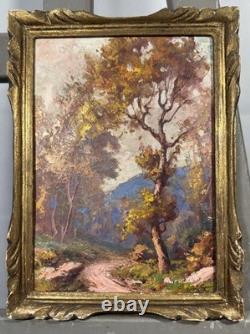
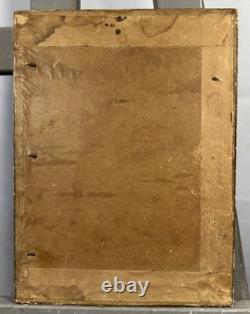
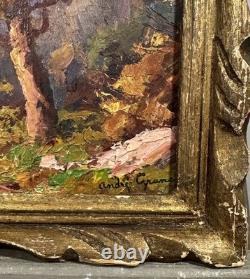
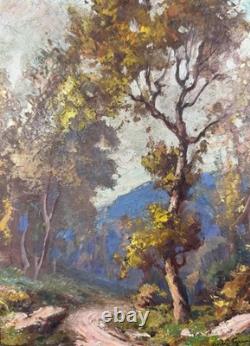
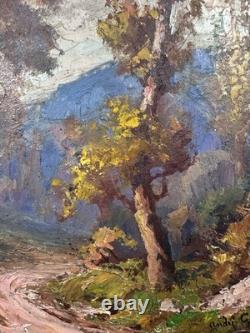
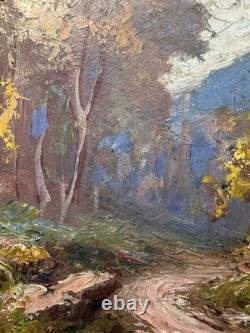
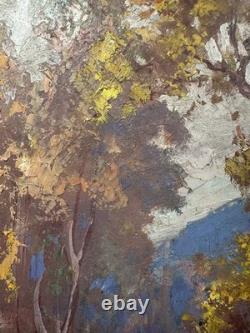
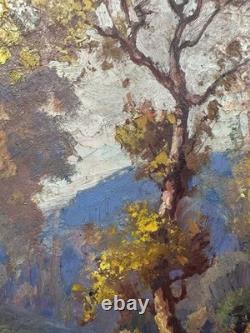
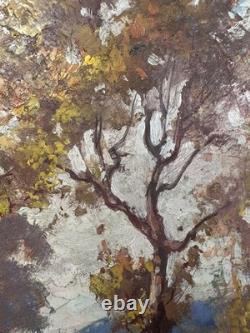
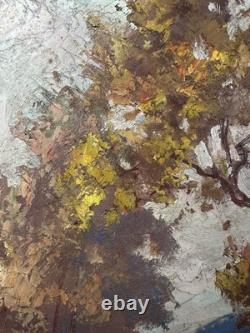
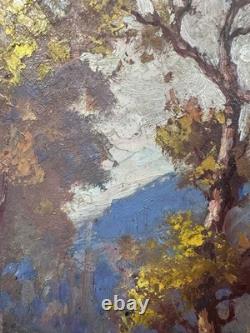


Circle of the Barbizon School. Signed at the bottom right. Frame: 25 x 29 cm.
Work: 21 x 15 cm. The Barbizon School refers to landscape painters established around the Forest of Fontainebleau. This artistic movement began in the 1820s and is closely linked to French Romanticism.
It came to an end in the mid-second half of the 19th century, around 1875. The pioneers who explored these places included Jean-Baptiste Camille Corot (1822), Théodore Caruelle d'Aligny, Camille Flers, Paul Huet, Alexandre Desgoffe, who painted in Barbizon before 1830, Narcisse Diaz de la Peña (1836), Lazare Bruandet, and later Charles-François Daubigny (1843), Jean-François Millet (1849), and Théodore Rousseau. Gustave Courbet seems to have stayed there as early as 1841, but more certainly in 1849, and then until 1861. In the early 1850s, Antoine-Louis Barye frequented Barbizon and eventually settled there, where he mingled with the painters and produced numerous oils and watercolors.
Félix Ziem stayed in Barbizon as early as 1853, and his presence at the Ganne inn is documented from October 13 to November 3 of that year. He was there again in 1860 and had a caravan made for him, allowing him to travel through the Forest of Fontainebleau. The Belgian painter César De Cock and Alfred de Knyff were also associated with this place.
